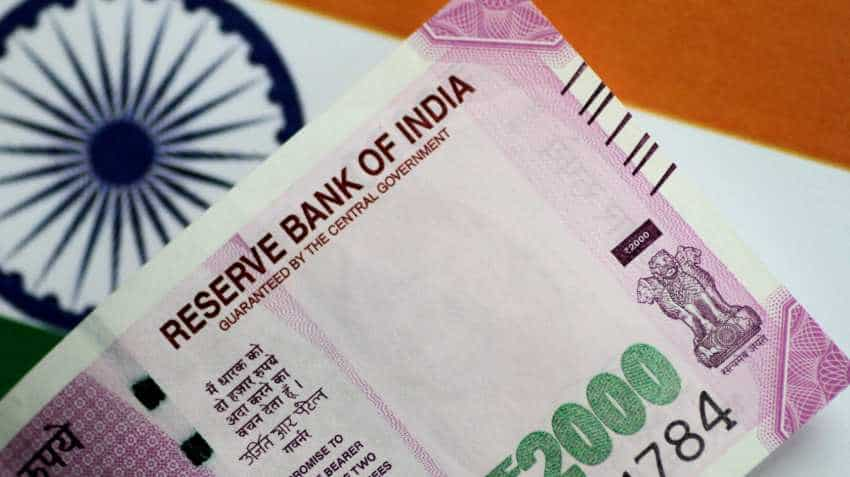35 bps RBI repo rate cut: Indian rupee to hit 69 or 72-mark? Here's where INR is headed
RBI’s repo rate cut was a major step for the Indian rupee, which is already facing headwinds due to geopolitical tensions, currency war and trade war among other factors.

Market sentiment was a mixed bag post RBI's 35 basis point rate cut announcement today as was clear from the fact that both Sensex and Nifty moved very little. On the other hand, Indian rupee moved against the dollar at interbank forex market. At around 1248 hours, the Indian rupee was performing at 70.692-level per dollar down by 0.343 points or 0.49%, as per Investing.com data. The moment RBI governor Shaktikanta Das along with MPC members announced a 35 basis points rate cut in policy repo rate on Wednesday, the rupee was stable around 70.90 per dollar level. Later, the domestic currency further strengthened. In previous trading session, rupee was over 71-mark against US dollar benchmark index. At present, RBI’s rate cut was a major booster for rupee which is already facing headwinds due to geopolitical tension, currency war and trade war among other factors.
In August 2019 policy, the RBI and MPC members voted to reduce the policy repo rate under the liquidity adjustment facility (LAF) by 35 basis points (bps) from 5.75 per cent to 5.40 per cent with immediate effect. Consequently, the reverse repo rate under the LAF stands revised to 5.15 per cent, and the marginal standing facility (MSF) rate and the Bank Rate to 5.65 per cent.
Also, the MPC decided to maintain the accommodative stance of monetary policy.
A Reuters poll on Wednesday, highlighted that, India`s rupee will recoup this year`s losses against the dollar over the coming 12 months, according to market strategists who said the issuance of sovereign bonds in foreign currencies may help prop it up. Rising political risk after India revoked the special status of Jammu and Kashmir state knocked the rupee on Tuesday, pushing it to a 5-month low of near 71 per dollar. Emerging market currencies tumbled on Monday following an escalation in the U.S.-China trade war, with the Chinese authorities allowing the yuan to weaken to above 7 per dollar for the first time in over a decade. The rupee fell 1.6%, its biggest drop since early December.
"In the second half of the year, what we are looking for is some sort of positive news on the U.S.-China trade war and maybe a little bit more (rupee) gains if the sovereign bonds issuance comes through," said Sakshi Gupta, senior Treasury economist at HDFC Bank in the Reuters report.
Interestingly, Amit Gupta and Gaurav Shah Research Analysts at ICICI Securities in their research note said, “Rupee likely to follow weakness in MSCI Emerging market currency index led by Chinese Yuan. MSCI Emerging market currency index comprises EM currencies. The weakness of its major currencies like Chinese Yuan leads the index lower.”
According to the duo, Chinese Yuan commands near 30% of the currency weight in EM currency index. As such, any weakness in CNY is likely to lead the index down. Hence, they said, “As indicated by the above charts, the rupee follows moves in MSCI emerging market currency index and Chinese Yuan, especially during phases of depreciation.”
Going forward, the ICICI Securities Research Analysts said, “Rupee is currently trading near 70.60 per US$. Following CNY’s move, it has space to weaken towards 72.5 in the current phase of depreciation.”
However, they added, “any cool-off in trade war escalation would be positive for the rupee. It would help it to appreciate towards 69.0 level as during current depreciation, crude oil has not moved higher.”
Mustafa Nadeem, CEO, Epic Research on RBI policy said, “The recent stance of the Fed by reducing the reserve rates and officially labeling China as Currency manipulator amid rising trade war tariffs is what have might be the issue on the table. The monsoon is slowly picking up while inflation remains under control. The headroom space was there and RBI is filling it.”
01:39 PM IST






 Rupee vs dollar in times of coronavirus: INR slips 32 paise to 75.21 amid scare
Rupee vs dollar in times of coronavirus: INR slips 32 paise to 75.21 amid scare Rupee in times of coronavirus mahamari: INR rises 56 paise against US dollar to 74.60 in early trade
Rupee in times of coronavirus mahamari: INR rises 56 paise against US dollar to 74.60 in early trade Rupee rises 18 paise to 76.02 against US dollar in early trade
Rupee rises 18 paise to 76.02 against US dollar in early trade Rupee weakens to record low; breaches 76 mark
Rupee weakens to record low; breaches 76 mark Rupee vs dollar: INR tanks 95 paise, falls below 76 level against US dollar
Rupee vs dollar: INR tanks 95 paise, falls below 76 level against US dollar